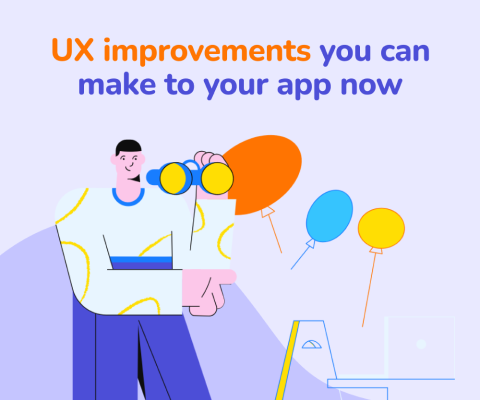December 17th, 2025, posted in for_founders
by Adelina
One of the most difficult problems in software design is keeping users interested in a product. With so many apps, platforms, and digital tools competing for attention, users can easily drop off if an experience feels dull or repetitive. This is where gamification comes in.
Gamification is the process of applying game mechanics to non-gaming environments in order to promote motivation, involvement, and long-term engagement. It is not the same as turning every app into a video game. From progress bars and leaderboards to digital badges and challenges, the right gamification techniques can transform a routine experience into something addictive (in a good way).
Gamification in software is especially useful in improving customer engagement, boosting retention, and encouraging continuous use. By leveraging a gamification platform, businesses can introduce meaningful challenges and rewards that align with the core functions of their products.
Let’s see why it works, how to implement gamification effectively, and what pitfalls to avoid when designing engaging digital experiences. These techniques are vital in gamification in software engineering.
Why Gamification Works
At its core, gamification taps into basic human psychology. People are naturally drawn to achievement, competition, and rewards—which is why video games can keep players engaged for hours. By integrating similar game mechanics into software, you can create an experience that keeps users coming back for more. This explains why gamification is so effective.
Here’s what makes gamification powerful:
-
Instant Feedback – Seeing progress in real time (e.g., a level-up, badge, or completed task) creates a sense of accomplishment and motivates users to continue.
-
Motivation Through Rewards – Earning points, unlocking badges, or receiving perks encourages users to keep going.
-
Competition & Social Engagement – Leaderboards and challenges fuel friendly competition and create a sense of community.
-
Behavioral Reinforcement – Encouraging positive actions turns desired behaviors into habits and boosts retention.
-
Emotional Satisfaction – Experiences that resemble games evoke feelings of joy, excitement, and curiosity.
-
Deeper Connection to User Identity – Gamification often allows users to build an identity within the platform (think avatars, ranks, or achievement records), which increases emotional investment. When users feel “seen” by the app, they’re more likely to return.
Gamification isn’t just a gimmick—it’s a well-researched approach to enhance software usability, especially within workplace tools and learning platforms.
Key Gamification Elements and How to Use Them
Not all gamification elements are equally effective. While adding a badge system or a leaderboard might seem like a quick fix, effective gamification tactics align with user goals and enhance the user experience.
1. Progress Tracking: Provide a Sense of Achievement
Users love seeing their progress. Whether it’s a completion bar, a checklist of completed tasks, or a leveling system, these game mechanics create a psychological push to keep going.
Examples:
-
Fitness apps track daily steps and calories.
-
Duolingo shows learning streaks and XP progress.
-
Task management tools highlight completed objectives.
Visible progress boosts motivation and encourages users to stay active and committed over time. Progress tracking also promotes re-engagement. If a user drops off, reminding them how close they are to reaching a goal can act as a powerful incentive to return.
2. Rewards & Badges: Make It Feel Valuable
Rewards activate dopamine in the brain, which reinforces behavior. Badges, points, and unlockable content are essential gamification elements.
Examples:
-
LinkedIn offers a badge for "All-Star" profile status.
-
Starbucks users earn stars (a form of digital badges) for purchases.
Balancing rewards is key—they should feel earned and meaningful. Overloading users can cause disengagement.
Many systems now offer tiered rewards—small rewards for quick wins, medium for consistent participation, and larger milestones for long-term loyalty. This tiered structure gives users something to aspire to at every level.
3. Challenges & Streaks: Keep Users Motivated
Gamified challenges and streaks tap into commitment psychology. Once users build momentum, they are more likely to stick with the app.
Examples:
-
Apple’s Activity Rings promote daily movement goals.
-
Language learning apps track how many days in a row you practice.
These strategies help motivate employees and users alike to maintain consistent engagement.
Challenges can be collaborative as well as competitive. Group goals or shared achievements add a sense of camaraderie and accountability. This is especially effective in team-based software environments.
4. Social Engagement: Use Friendly Competition
Humans are social. Adding social features to gamification encourages interaction and increases usage.
Examples:
-
Strava allows fitness enthusiasts to compete with friends.
-
Learning platforms include weekly leaderboards to foster competition.
These strategies improve employee engagement and team participation in the digital workspace.
Some apps integrate social sharing features so users can post achievements to external platforms. This not only builds user pride, but also serves as organic marketing for the software.
5. Personalization: Tailor to User Goals
Adaptive gamification is about using data to serve custom challenges and rewards. It respects individual motivations and encourages ongoing interaction.
Examples:
-
Spotify generates custom playlists based on listening behavior.
-
E-learning platforms adjust content difficulty based on user progress.
Personalized challenges can enhance software by aligning user experience with long-term goals.
Personalization also improves inclusivity. When game systems adapt to different user styles—competitive vs. collaborative, social vs. solo—it ensures that gamification is accessible to more people, not just the most competitive users.
How to Implement Gamification Effectively
To successfully incorporate gamification into software, the development team must start by identifying what motivates their users. Consider these tips:
-
Choose gamification elements that align with your product’s purpose.
-
Use feedback loops to maintain user interest.
-
Monitor and adjust based on performance data.
-
Create tiered achievements and progression systems.
A strong gamification platform can also simplify the technical aspects of game design, helping developers implement gamification faster and more efficiently.
Onboarding is a crucial moment for gamification. Adding simple goals, rewards, or visual progress in the first session can dramatically reduce drop-off rates. Users should feel engaged right from the start.
It’s also valuable to involve users in feedback cycles. Let them vote on new rewards or suggest challenge types. This co-creation can significantly enhance satisfaction and loyalty.
Companies looking to implement unique gamification should also consult cross-functional teams, including UX designers and behavioral experts. The process should be iterative and data-driven.
Gamification in the Workplace
Gamification isn't just for consumer apps. It's also increasingly used to motivate employees in corporate environments.
For example, many companies have turned their internal training systems into experiences that mimic games with real-time feedback, quizzes, and rewards for completing learning paths. A gamified management system can improve performance reviews and foster a competitive yet collaborative work environment.
Case Studies:
-
A multinational firm used gamification to increase participation in its wellness program, resulting in higher employee engagement and reduced absenteeism.
-
A SaaS provider gamified its onboarding process, resulting in quicker time-to-productivity and greater engagement from new hires.
In sales teams, gamification is often used to track KPIs and encourage productivity. Reaching quotas, closing deals, or improving customer satisfaction can all be rewarded in fun, visual ways.
When companies incorporate gamification into everyday processes, they boost morale, drive participation, and enhance workplace satisfaction.
Additional Applications of Gamification
Gamification in software engineering isn't limited to productivity or training. It’s found in:
-
Customer loyalty programs using points, badges, and rewards to keep users engaged.
-
Education platforms where learners earn achievements as they progress.
-
E-commerce apps where users complete challenges to earn discounts.
Game elements can also support social good. Environmental apps, for example, reward users for eco-friendly actions, such as recycling or reducing energy consumption.
Another growing area is financial gamification. Apps like budgeting tools and investing platforms now include milestone tracking, savings streaks, and spending “levels” to make financial responsibility more approachable and even fun.
Design Considerations for Gamification
A well-designed gamification strategy begins with the user. Ask yourself:
-
What motivates my users?
-
What actions do I want to reinforce?
-
How can I integrate game-like experiences without disrupting usability?
Make sure gamification works hand-in-hand with accessibility, inclusion, and diversity principles. Everyone should feel empowered and excited to participate.
It’s also important to revisit and refine game mechanics over time. What works today might feel stale next year. Regularly introducing new seasonal challenges, rewards, or limited-time events can keep the experience fresh and exciting.
Pitfalls to Avoid
Even the best ideas can fall flat if poorly executed. Here are common issues in gamified app design:
-
Overcomplicating the Interface: Gamification should be seamless, not confusing.
-
Empty Rewards: Badges and points must be meaningful.
-
Fatigue: Too many push notifications or repetitive challenges can backfire.
-
Overemphasis on Competition: Not all users enjoy competing. Balance with self-improvement features.
-
Ignoring Customer Engagement Goals: Focus on the overall experience, not just the game-like elements.
Avoid “pointsification”—the mistake of just slapping points and marks onto a product without making them part of a coherent journey. True gamification supports and enhances the user’s goals, not distracts from them.
Final Thoughts
Gamification in software is more than a buzzword. When done right, with the help of the right tools and best practices, it can increase retention, improve user experience, and even motivate employees. Whether you’re building a learning app, a productivity platform, or a management system, gamification can be a strategic tool for success.
If you're part of a development team, think of gamification not as a gimmick, but as a design philosophy. Incorporate gamification in a way that supports user goals, creates engagement, and fosters long-term success in your app or system.
Gamification makes a critical asset in software engineering, for designers and developers alike. From simple game elements to full-fledged gamification platforms, there are countless ways to improve customer engagement and boost the overall effectiveness of your product.
As digital platforms become more central to how we work and learn, gamification has evolved from a nice-to-have feature into a core strategy for driving engagement and productivity.

















